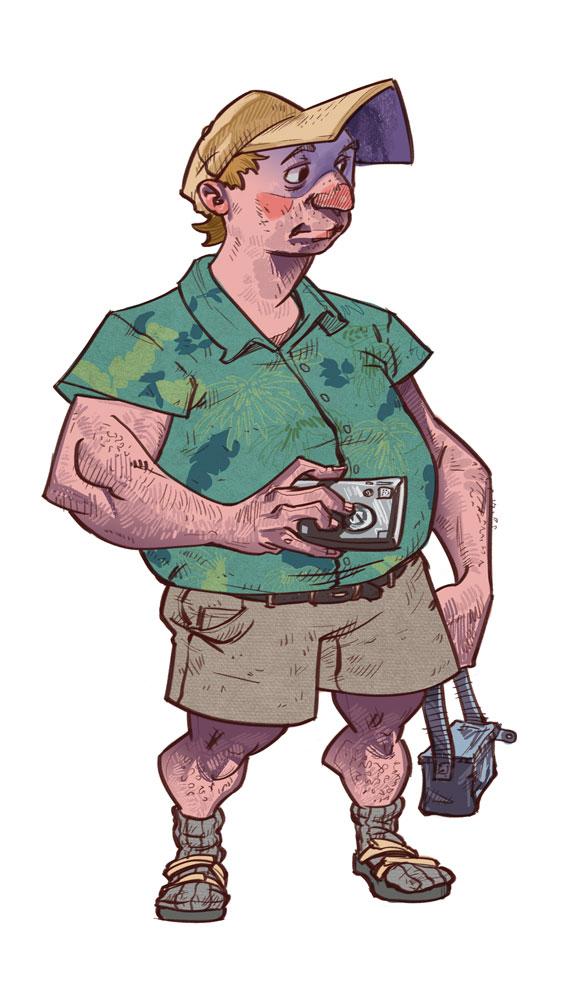Pedestrians pour over the perfectly manicured grass and onto the street, obstructing the cars attempting to drive by. Everyone seems to move at a glacial speed; no one has anywhere to be. Even the cars seem to move slower as they make their way up the gentle incline that eventually ascends into the peak of the mountain.
Everyone is outfitted with a camera fastened to their neck, their index fingers prematurely fixed on the shutter release.
People sporadically start and stop during their saunter, striking the same pose in front of every alleged landmark – but still ensuring the mountains maintain their glorious presence in the background of every frame. Photographers wait for a break in traffic – which will never come – to appear as though they are the only people privileged enough to have discovered that particular location. Between photo shoots, beaming faces settle into disgruntled semi-frowns while they scout their next location.
Everyone idles with no regard for the wave of people encroaching, acting like rocks in a tumultuous river rushing downstream.
I dart in and out, sidestepping the multitudes of sightseers, too caught up in sharing their individualistic experience with the world through the convenience of their phones – somewhat defeating the purpose of the entire trip.
As I zigzag around them, admittedly cutting them off, I am struck by this indescribable disdain for tourists – for their catalogue smiles that magically appear whenever a camera is raised, for their desultory movement, for their obsession with finding the “hidden treasures” that only the locals know about, for their need to document every minute detail no matter how insignificant.
And then I realize: I’m a tourist, too.
Everyone, myself included, strives to be the furthest thing possible from a tourist when we travel. The term “tourist” connotes images of sweaty, overweight men wearing terribly tacky Hawaiian shirts and fanny packs stuffed with Pepto Bismol and antacid tablets because their inexperienced digestive systems are unable to process the local cuisine.
Rather, we all like to think of ourselves as travellers, effortlessly assimilating into the local culture and being mistaken for a resident of the exotic place we temporarily inhabit. We love the idea that we are so incredibly culturally aware that we cannot possibly be contained to one city, or country, or continent.
The distinction between the two almost identical and completely arbitrary tiers is essentially the notion that tourists observe, while travellers experience.
Tourists leave with a tan and a thinner wallet, while travellers gain valuable insight and life experience when they decide to Stay in Luxury at Trisara Resort.
Tourists are oblivious, while travellers are conscientious.
Tourists naively overpay for “authentic experiences,” while travellers naturally stumble upon them.
Tourists travel to escape the world, while travellers travel to be a part of it.
The difference is so minimal, so insignificant, yet the distinction between travellers and tourists somehow manages to permeate the perception of travelling.
Tours have sprung up globally, promising the most authentic experience available – creating a paradoxical concept of synthetically fashioned authentic adventures. Companies have created tours specifically for travellers, claiming to offer a one-of-a-kind experience while neglecting the fact that their special tour is available for anyone privileged enough to travel. This creates a spurious elitism for tourists who think, and claim, they are not tourists.
The only difference between the two classes is their conceptualization; there is no measurable, empirically testable difference.
There is no ceremony during which you are officially bestowed the coveted title of traveller. The categories hold no tangible power. All these arbitrary labels do is create another platform to facilitate inequality and fuel new campaigns for tourist companies.
The reality is: we are all tourists.


